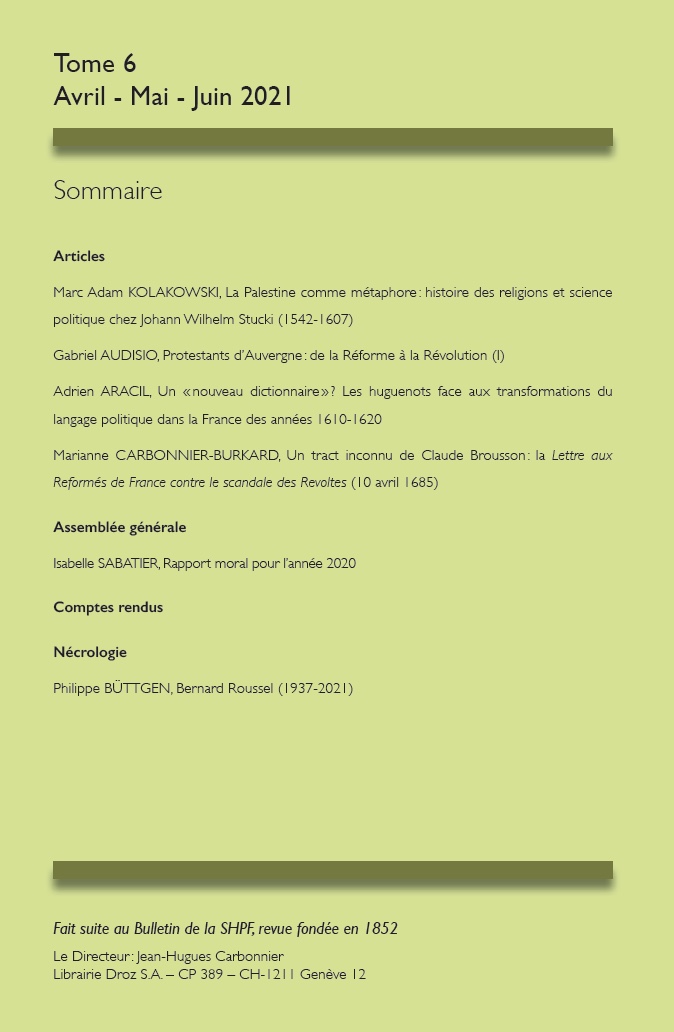La Palestine comme métaphore
Histoire des religions et science politique chez Johann Wilhelm Stucki (1542-1607)
Abstract
For Johann Wilhelm Stucki (1542-1607), ancient Hebrews and Palestinians are part of an open scene on the past, a laboratory where possible solutions for his own time can be identified. The Zurich polymath draws a parallel between the biblical conflicts opposing Israel to its neighbours from Palestine and the European wars of religion. In identifying the different parties involved, Stucki seamlessly describes their respective environments, customs, and religions. From his point of view, the ill-defined territories of the ancient Palestinians, between land and sea, explain the ambiguities of their manners and the varying aspects of the divinities they worship, some ambivalent figures that are both marine and agricultural. Relying on a theory of climate recently updated by Jean Bodin in his Six Livres de la République (Paris, 1576), Stucki seems to depict this conflict as one that is deeply inscribed in nature. In his eyes, there is only one viable political answer: a mutual recognition of differences and their consequent articulation in the dialectical process of vicinitas , or “good neighbourhood.”
How to Cite
More Citation Formats
Issue
